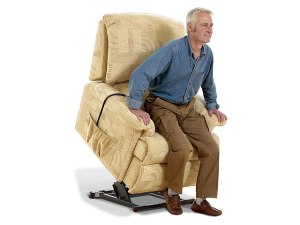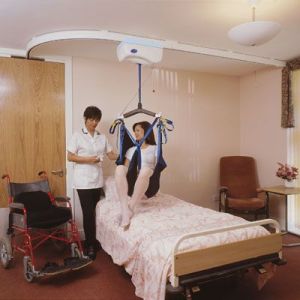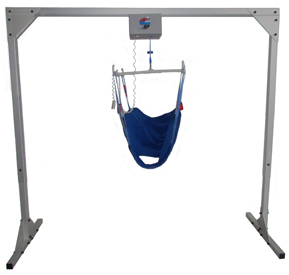Home Care Lift Aids Those With Limited Mobility
Home Care is a growing industry and it goes well beyond receiving health care in the home. Those living with disabilities have known about home care for a long time. They typically relied on family caregivers to help them with activities of daily living. Today, people without disabilities are choosing to stay in their home longer and receive help in their home if necessary. Some may need help with medication and some may simply need companionship or help with chores.
Part of “aging in place” is preparing your home with “universal design” in mind. This view on home design and accessibility promotes usability by all abilities while maintaining a normal home style. This can include barrier free design techniques like no-curb shower access, extra-wide doorways and ADA-compliant plumbing. The idea is to design without barriers to anyone without compromising on the aesthetics. This is ideal if you are building a new home, but what about remodeling your existing home?
Many barrier-free ideas are simple and do not cost much. Simply removing clutter and creating wide, safe walkways through your home is a start. Other simple changes include more ergonomic door handles or affixing loose rugs. But what about those who suffer from limited mobility or physical handicaps that prevent them from using the stairs or getting up easily from furniture?
 Home medical devices have come along way. Supplies can be delivered to your home and administered by yourself, a family member or a home care aide. They have recliner chairs that help you stand up. They have attachments for your bed to help you get yourself up. These are everyday devices that make life a little easier as you age. However, more sophisticated medical devices for the home have not gone through the same improvement process.
Home medical devices have come along way. Supplies can be delivered to your home and administered by yourself, a family member or a home care aide. They have recliner chairs that help you stand up. They have attachments for your bed to help you get yourself up. These are everyday devices that make life a little easier as you age. However, more sophisticated medical devices for the home have not gone through the same improvement process.
In the past, the only way to move a patient with limited mobility was with a floor-based Hoyer lift. These are simple tools that are anything but simple to use. Patented over sixty years ago, it was the standard for many years and still remains as the only lift that Medicare will pay for. These lifts are used in hospitals and skilled nursing facilities with reasonable success, although they are being rapidly replaced by ceiling track lift systems. In the home, these systems are very difficult to use and can be dangerous if not properly operated. They require two aides to properly transfer a patient and the limited area of a typical bedroom can limit the proper use of the lift.
 Ceiling track lifts are a more modern approach to patient transfer. Hospitals and skilled nursing facilities are able to install small ceiling track pieces in each room and share a portable lift motor between rooms as needed. They are able to save money by sharing resources between rooms. In the home, installing ceiling tracks is a very expensive process. A practical and affordable solution to this has been the development of a freestanding overhead track lift system. These feature all the advantages of an overhead lift without the costs of a ceiling track system.
Ceiling track lifts are a more modern approach to patient transfer. Hospitals and skilled nursing facilities are able to install small ceiling track pieces in each room and share a portable lift motor between rooms as needed. They are able to save money by sharing resources between rooms. In the home, installing ceiling tracks is a very expensive process. A practical and affordable solution to this has been the development of a freestanding overhead track lift system. These feature all the advantages of an overhead lift without the costs of a ceiling track system.
Traxx Mobility Systems manufactures the TITAN 500, a freestanding overhead patient lift. The system includes an aluminum frame and overhead track, a rechargeable electric lift motor, a four-point lift bar, hand-held remote control and machine-washable sling. The system comes partially assembled and is fully assembled by two adults in twenty minutes. It does not attach to the home in any way and can be easily be moved if necessary.
The most important aspect of an freestanding overhead patient lift is that it allows a single caregiver to transfer a patient. This can be accomplished in under five minutes without fear of injury. The lift motor raises and lowers the patient at the press of a button. The caregiver simply has to gently push the patient across the overhead beam to transfer. This provides for a much more stable and dignified lift experience for the patient with the caregiver close at hand throughout the entire transfer.
###



Comments
Post a Comment